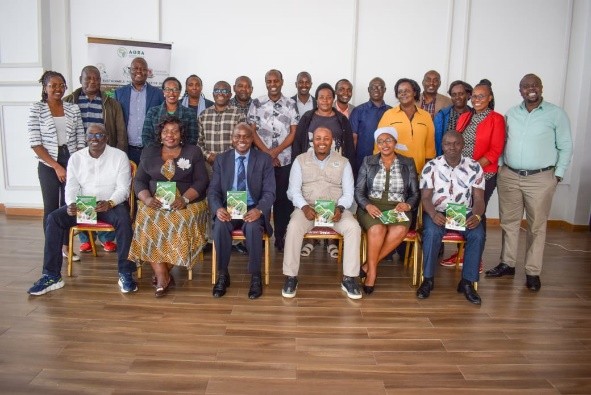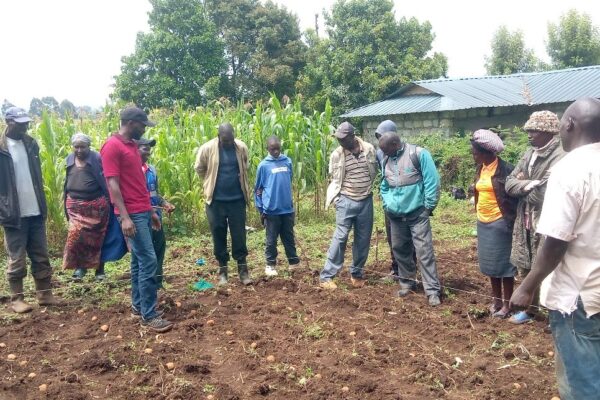Potatoes are a major staple in Kenya and an important income crop. It is grown by roughly 800,000 small‑scale farmers on around 158,000 hectares, producing between 1 to 1.5 million tons annually.
Despite this, potato yields in Kenya remain low (average ~8‑10 tons/ha) compared to the potential yields (25‑35 tons/ha) seen elsewhere. One of the constraining factors is the low level of mechanization, among others like poor seed quality, climate variability, and post‑harvest losses.
Current Status of Mechanization in Kenyan Potato Farming
- Low adoption among smallholders
- Many farmers still rely on manual tools (hoes, forks) or animal‑drawn ploughs for land preparation.
- Very few own tractors or advanced equipment; instead they hire services or rent equipment.
- Activities like ridging, tilling, hilling, weeding, harvesting are largely manual for many small plots.
- Examples of mechanized operations
- When a farmer used mechanized planting & harvesting and used ridge‑making machinery; this has helped scale from planting ~1.2 ha/day manually with many laborers to ~10 ha/day with fewer laborers. Harvesting similarly scaled up. Mechanization reduced tuber damage, lowered costs, improved yield.
- Mechanized operations to reduce handling, prepare ridges, incorporate fertilizer, and reduce human/animal traffic to minimize disease transmission.
- County initiatives : government providing mechanisation hubs, subsidised machinery, and agricultural mechanization services (AMS) to allow smallholder farmers access to equipment like ploughs, ridgers, planters, harvesters.
- Mechanization’s impacts
- Increased productivity: mechanization can increase yields significantly. Some sources estimate up to 5× yields if mechanization is paired with good practices and quality seed.
- Reduced labour and time: fewer laborers needed, faster operations, enabling planting and harvesting at more optimal times.
- Reduced post‑harvest losses and reduced damage: mechanized harvesters and proper handling reduce tuber damage (20% fewer damaged potatoes vs manual harvest in some reported cases).
What Mechanization Could Achieve in Nyandarua
If well implemented, mechanization plus supporting measures in Nyandarua could lead to:
- Doubling or tripling average yields, from ~8‑10 t/ha to 25‑40 t/ha.
- Lowering labor costs and reducing drudgery, especially during planting and harvesting seasons.
- Reduced post‑harvest losses (from say 30‑50% down to perhaps 10‑20%) through better handling and storage.
- More stable incomes as farmers shift from immediate sales to stored produce, timing the market better.
- Increased value addition locally (processing, packaging, grading) boosting formal markets and reducing dependency on brokers.
Challenges / Constraints
Mechanization in potatoes faces a number of obstacles in Kenya, especially for smallholder farmers:
- Cost & Access
- Own machinery is expensive; many farmers can’t afford to buy tractors, planters, harvesters. They often depend on hiring services which may be unreliable or expensive.
- Spare parts, maintenance, fuel costs further add to costs.
- Seed Quality and Availability
- Poor quality seed is widespread. More than 90% of farmers use recycled or uncertified seed, leading to disease, degeneration, and low yields.
- Certified seed production is low, meeting less than 5% of acreage demand in many regions.
- Knowledge, Training and Extension
- Farmers may not know how to operate or maintain machinery, or apply mechanized practices optimally.
- Extension services can be weak or underfunded.
- Land Fragmentation & Plot Size
- Many smallholders have small, irregular plots, which are less suited to large machinery. Maneuvering equipment on small, uneven, sloping farms is harder.
- Environmental / Climate Issues
- Erratic rainfall, droughts, soil degradation affect ability to use mechanized equipment.
- Also storage and post‑harvest infrastructure are often inadequate, meaning even well‑mechanized harvesting can lead to losses if potatoes spoil or are damaged in transit.
Opportunities & Recommendations
To increase the uptake and benefits of mechanization in potato farming in Kenya, especially for smallholders, the following strategies are promising:
- Mechanization Service Providers & Hubs / Shared Equipment
- Establish AMS (Agricultural Mechanization Services) hubs in counties to make machinery accessible via hire. The hub model helps smallholders avoid the capital costs of owning equipment. (Already being done in Nakuru, Nandi, etc.)
- Promote cooperatives and producer groups to jointly access mechanization services.
- Subsidies / Financing Models
- Subsidized machinery, either through county/national governments or via development projects (e.g. Machinery Ring Under GIZ in Nyandarua) to make equipment affordable.
- Flexible financing (leasing, hire‑purchase) for smallholders.
- Improved Seed Production & Seed Systems
- Scale up certified seed production using mechanized seed multiplication technologies (such as apical rooted cuttings, screen houses, etc.).
- Improve distribution networks (cold storage, transport) to deliver seed tubers in good condition.
- Training / Extension & Demonstration Plots
- Training farmers in best practices for mechanized potato farming: timing, ridging, fertilizer application, machine operation. (NPCK and Egerton university under KSPI project have been training farmers)
- Use of demonstration plots to show benefits (e.g. lower cost, higher yield, reduced losses).

NPCK and Egerton University training farmers on Mechanization in Nyandarua
- Equipment Design Appropriate for Smallholder Conditions
- Machinery tailored for small or irregular farms: small tractors, lightweight planters/ridgers, small harvesters.
- Ensuring ease of maintenance, availability of spare parts, fuel efficiency.
- Policy and Institutional Support
- Government policies to support mechanization through subsidies, tax breaks, or import duty reductions for farm machinery.
- Strong institutional coordination (county, national research bodies like KALRO, NPCK, private sector) for strategy and oversight.
- Ensuring that mechanization doesn’t displace labor unfairly but rather improves livelihoods.
Mechanization offers one of the strongest levers for improving potato production among smallholder farmers in Kenya. If paired with better seed, improved agronomy, stronger extension services, and supportive policies, it can help overcome many of the current yield‑limiting factors.
While there are obstacles—costs, access, land fragmentation, knowledge gaps—there are already encouraging signs from counties and firms showing what is possible. Scaling those successes, with careful adaptation to local conditions, can help Kenya achieve much higher potato productivity, reduce post‑harvest losses, and improve incomes for thousands of small farmers.





